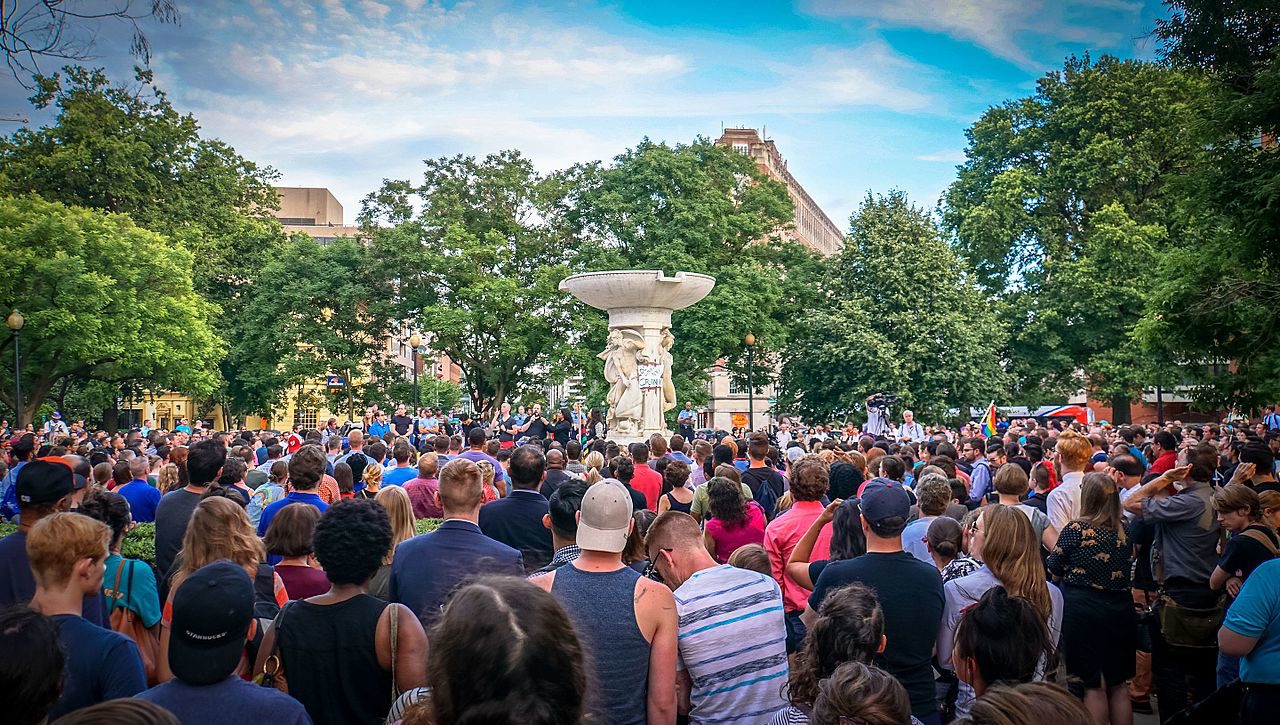By Patricia Graham for the Brunswick News
On the night of June 13, a vigil was held in Fredericton to mourn those killed and injured at the Pulse nightclub in Orlando, Fla.
The vigil was mentioned in a story in The Daily Gleaner about the response to the tragedy by St. Thomas University and the University of New Brunswick. A handful of individuals took to social media to complain about the accompanying photograph.
It was a moving image: it showed a people in profile, heads bowed in mourning; lit candles were visible. The concern expressed on social media was that people could be identifiable and no photos from the vigil should have been published without individual consent.
As is typical these days, some of the posts were vituperative and personal in nature, even threatening. Others were thoughtful and respectful.
Lee Thomas posted on Twitter that “not everyone is ‘out’ in all aspects of their lives. They deserve to grieve and/or celebrate at events too.” And in another tweet, “Not everyone wants to be an advocate/face of the community. Some folks just want to exist within our community.”
Thomas, with whom I spoke by phone, describes herself as someone willing to put herself forward as a representative of the LGBTQ community. She believes we shouldn’t publish photos of members of that community at public events without their consent. She also believes journalists have some things to learn about her community.
I agree with her on the second point, but not the first.
It is legal to take photographs at a public event; anyone, including media, can do so. Contrary to what some claimed on social media, the reporter did not promise consent to anyone at the vigil; she was there but briefly, snapped a few photos, and, in response to a question from one individual, said that she was from The Daily Gleaner. Other than that, she spoke to nobody and no one spoke to her.
What are the ethical considerations for journalists?
This event occurred in a particular context. Erin Fredericks, a sociology professor at St. Thomas University and community advocate, told me that some of those who attended would have a special relationship with Clinic 554, the locale of the vigil. The clinic’s website says, “The breadth of services offered by our family practice includes all scopes of medicine, from pediatrics to geriatrics with a focus on reproductive, trans*, LGBT/Queer, and HIV care.” Some at the vigil may have had “safe place” in their minds, not “public place.”
It was also less than 48 hours after the shocking events in Orlando; those who were there would have been profoundly affected. They might have been feeling sadness, vulnerability, fear and anger. For some, it would have felt intensely personal.
We know that members of this community may experience harassment and discrimination, even hatred and outright violence.
On the other hand, one of the ethical considerations for media is even-handed treatment. “Playing favourites” or creating double standards – we’ll ask permission from this group but not that group – can call impartiality into question and negatively affect a newspaper’s credibility. Consistency is always best.
In Moncton, Donna Hooper, the editor of the Times & Transcript received one similar complaint about photographs of the vigil in that city, with a request that they be removed from the website. Here is a portion of her thoughtful response:
“As you are aware, it was a public vigil that was intended to show solidarity and sympathy for the victims of the Orlando shooting. It was one of hundreds of public vigils around the world that were covered by media to illustrate an important message.
“The intention of the Times & Transcript was to cover [a] significant event that attracted people representing all aspects of Moncton ‘s community who were impacted by the tragic shooting. Those who have concerns about being photographed should know there is always a chance of media attending any public event and can choose not to attend. I believe it important, however, to have Moncton’s reaction on record.”
On June 16, another vigil took place in Fredericton. Fredericton Pride, one of its organizers, posted on its website beforehand that members of the media would be present “to provide important coverage of the issues that matter to us as members of the LGBTQ community.” An MC asked any reporters present to raise their hand to identify themselves and The Daily Gleaner reporter did so.
Reflecting the community and their issues, concerns and achievements, and making an accurate, representative record: these are important aspects of journalism and require that we continue to photograph public events and, when relevant, the people at them.
Nonetheless, I do think we can increase our understanding of this community and how best to exercise our journalistic obligations reporting on it. Management is of the same view, and we will be addressing that in the coming weeks and months.
This column was published originally by Brunswick News and reprinted here with Graham’s permission.
Patricia Graham is Ombudswoman for Brunswick News.

